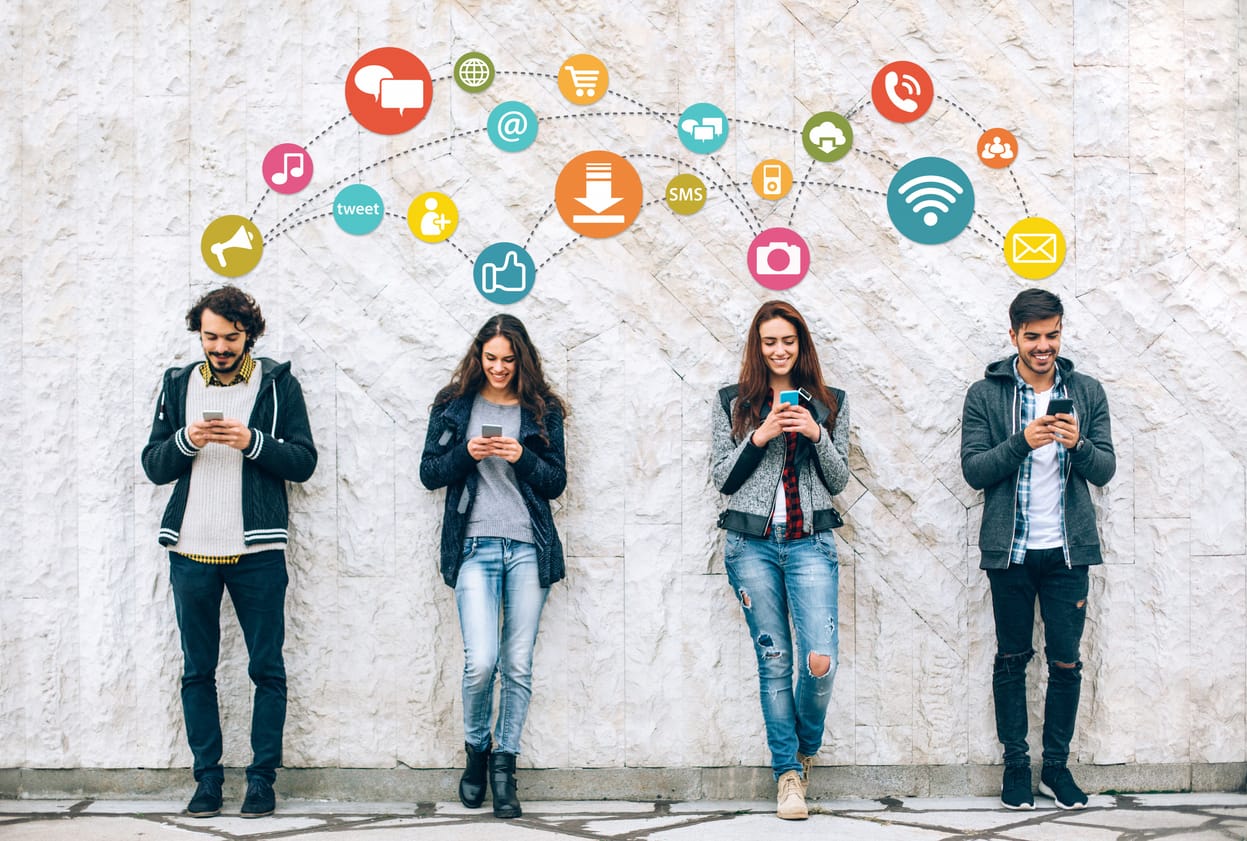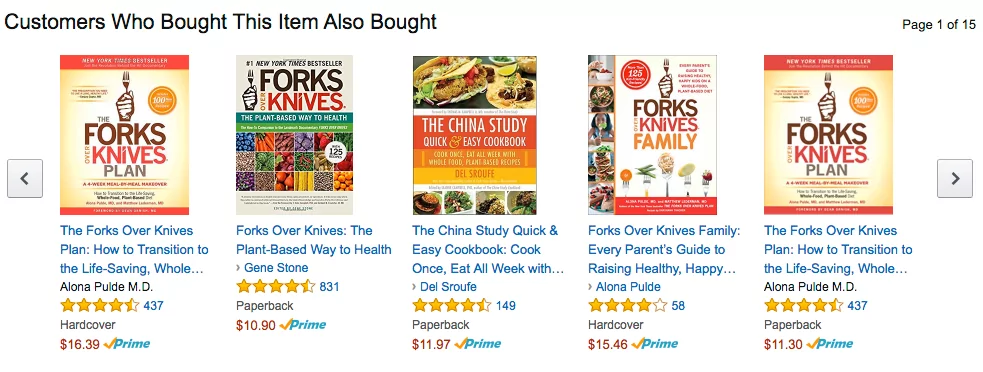Since the average attention span has decreased from 12 to just eight seconds – meaning goldfish now can hold attention longer than we humans can, it’s important to take steps to stand out whenever possible. We’re constantly bombarded with information, especially when we’re online – and to cope with that overload, we process things quickly – sometimes at the expense of making connections with our intended audience. Personalizing user experience, despite how creepy it may seem at first, is one of the most effective ways to make that connection.
Let’s look at the types of personalization you can use, the various ways you can create a tailored user experience, and why you want to integrate personalization into your strategy in 2017 and beyond. Personalizing your web experience can help you see an average of 19% higher sales.
Ways to Personalize User Experience
- Individualized Personalization: In this model, each user has their own unique dashboard or options, based on information available about each person. The computer will generate a model of who is person is, and then present different information for each one. For instance, based on the search and purchased history, the computer may determine that someone’s engaged.
- Role-Based Personalization: In this model, users are grouped together according to the characteristics they share. Target figured out a teenage girl was pregnant before her own father did – based on her browsing and shopping habits. With customer data, they noticed patterns specific to pregnant women – such as the increased consumption of supplements and lotion. Using the trends, they were able to start sending coupons to women throughout various stages of pregnancy.
Where the Data Comes From
You cannot personalize anything about the user experience without the data to show you how. Get the data you need from:
- Customer Purchase History: You should have a system in place to keep track of who is buying what. Use that information to figure out how often they’re buying, how often they’re visiting your website (whether they are making purchases or not), how they got to your website in the first place, and more. This will help you figure out what keeps people coming back, so you can include it in any future strategy.
- Website Analytics: Google Analytics and other platforms can help you see demographic information about your visitors – such as where they live, their age, gender, and the device they’re using to access your website. You’ll see how people came to your website, what page they came in on, what pages they visited, which page they left on, and how long they were there. This information can help you see which demographic segments find your business the most appealing.
- Social Media Profiles: If you’ve implemented social login options on your website, you can sometimes see social profile information on your customers. This information can help you learn how to further personalize user experience.
People don’t mind giving information to companies, if that information is used to improve their experience. However, the majority of online users want to know why you’re asking for their information, what information you’re asking for, and how you’re going to use. For best results, keep the customer in control of the information they share, and allow them to revoke that permission should they decide to do so in the future.
According to a global study from Microsoft, The Consumer Data Value Exchange, people want to be rewarded for the information they share with a company. 56% of people are okay with sharing their date of birth and address, and 53% are okay with sharing basic demographics like age, marital status, and gender.
But, 64% expect cash rewards and 49% say they’d expect significant discounts in exchange for the information. 26% of customers are willing to exchange their date for services that help the find new products, ideas, and content, and 29% are okay with the information sharing for an improved streamlined process.
Whatever you do – make sure the data collection remains transparent, respects customer boundaries, and helps add value for the customer.
-
Use Dynamic Content
As your customers browsing habits provide a wealth of data about them, you can present more targeted content for each visitor. With every page they view, form they fill out, and email they open, you’ll have more information to further fine-tune the content they’re presented with each time they visit you. As they see the changes whenever they take a look at your site, they’ll begin to see how the content is personalized to them, thereby appreciating the effort to make the experience about them.
-
Make Recommendations
Leading retailers show product recommendations based on browsing and purchase history. This not only helps to personalize user experience individually, but can also help increase revenue. Amazon, for instance, shows products to buy based on past viewing history. But, they take it one step further and show items that are frequently purchased together, as well as related products customers have also bought after buying a product.
You can use a similar recommendation engine that will become increasingly more accurate as customers use your website. Though the data is from 2012, the Amazon recommendation engine helped increase sales by 29%, likely because they’ve integrated recommendations in nearly every part of the purchasing process, even sending out emails with recommendations based on purchase history.
-
Use Smart Calls-to-Action (CTA)
Smart CTAs know when customers have already viewed the product, so another CTA steps in to replace the original. If you’re getting repeat visits to your ecommerce site, it’s not ideal to offer the same things over and over. If a customer clicks the “Learn More” button, they don’t need to see the same CTA on the second or third visit as they did on the first. If they download a white paper that shows information about your products the first time they come by, they should be getting another offer for more information on subsequent visits or logins. Studies show personalized CTAs convert 42% better than static, so there’s no reason to serve the same old thing to everyone.
-
Location-Based Personalization
Many online retailers also have mobile apps to complement them, making it easy to reach people while they’re on the go. For instance, with the Kohl’s app, you’ll get special offers via push notifications when you’re near a physical store location. But, not only can you shop in the app whenever you want, you can manage and redeem your Kohl’s Cash and gift cards, as well as your Yes2You Rewards. You can customize the app with store mode to choose your local Kohl’s, check prices, see related items, and search store inventory. If you place an order within the Kohl’s app while at the Kohl’s store, you’ll even get free shipping.
But this works in other ways, too. If your customer is at the gym, your mobile app can offer them a special deal on protein bars from the store that’s around the corner, or a heart rate monitor.
Location personalization is available on desktop websites, as well, with retailers like T-Mobile asking permission to get your location data so they can show you deals available in your area, as well as the closest store locations.
-
Personalize Your Emails
A 2013 report revealed personalized emails generate an average of 600% more revenue than non-personalized emails. But, surprisingly, 70% of brands aren’t personalizing email. Personalized email, at the very least featuring the recipient’s name in the subject, can help improve your brand impression.
Email personalization also improved unique open rates by 29%, and unique click through rates by 41%. Personalized subject lines got 26% higher open rates overall, with travel industry emails getting the biggest boost as a result of the tactic.
-
Make it Social
If you offer social login, social sharing, and social invitations, you can merge social media platforms with your website experience. Amazon makes it easy to share your purchases with your friends and family on Facebook, Twitter, and via email. You can do the same thing, because when people are really excited a purchase, they’re likely to share it with their friends. And when the purchase gets shared with the network, there’s a chance at least one, if not more of those friends will click through to learn more about the product. There’s also a chance that at least one of those click throughs will translate to a purchase. A purchase that likely would not have happened without the social share.
-
Personalize Your Loyalty Program
70% of customers won’t sign up for your loyalty program because it is inconvenient to do so, and takes too much time. 72% of them would be more likely to sign up for the program if the process was simplified with text messaging. 80% of Generation Z is willing to sign up for a loyalty program to get deals and discounts in exchange, though 33% of Millennials say they don’t like rewards programs because there are too many cards to carry.
To increase participation in your program, personalize the offers to the buyer’s shopping habits. It does no good to offer a loyal customer a 25% discount on books, if he shops at your store for tools.
-
Personalized Live Chat
Your customers are humans, just like you. I know you hate dealing with automated systems as much as I do. Why would you think your customers are different? And why would you think being treated like a number online is any different than dealing with automated phone system? Software can help you engage with your website visitors in real-time, helping them get to the products and services they’re looking for, and impressing them with your top-notch customer service.
Human to human contact generally makes a better experience anyway, but personalizing the experience takes it to the next level. Users should enter their contact information or be invited to register with social login. This will ensure your customer service team has relevant information on hand to personalize the experience.
Personalization vs. Customization
Personalization is not the same thing as customization. Personalization is done on the system side, based on developers and the way users are identified. It can be done at the individual level, or at the group level.
The users themselves, handle customization, when the system allows. This allows them to make the changes they want to improve their experience, such as adjusting the layout, or choosing specific topics of interest. Many online retailers make it possible to choose the number of products to view on a page, or to sort the products in a number of ways, such as alphabetically, or by price.
Why Personalize User Experience?
As a business, the goal of personalization is to make sure your content and functionality matches your users needs, with no effort from the users themselves. Your system will profile the user and make adjustments to the interface accordingly. This will emphasize or restrict information based on the user’s profile, creating a unique experience. You can also use customization to enhance the user experience, but neither personalization nor customization can fix a broken site.
If you don’t have quality content that captures user interest, then it doesn’t matter how you use personalization or customization. Instead, the solution will lie in changing the site structure or the way the content is presented. Once that’s fixed, you can move into personalization and customization options to improve the experience. Start with personalization because it doesn’t require the user to do any work – and then give users the option to customize their experience based on their preferences. Remember, users will have to invest time in setting everything up to their specifications.
How do you feel about personalization and customization, both as a business owner and an internet user? Tell me below.
Photo credit: iStock



